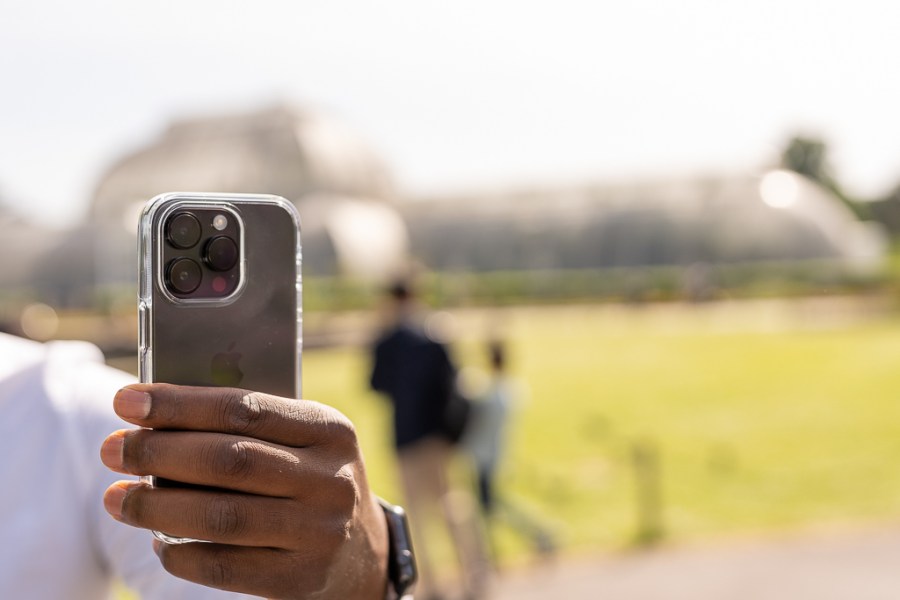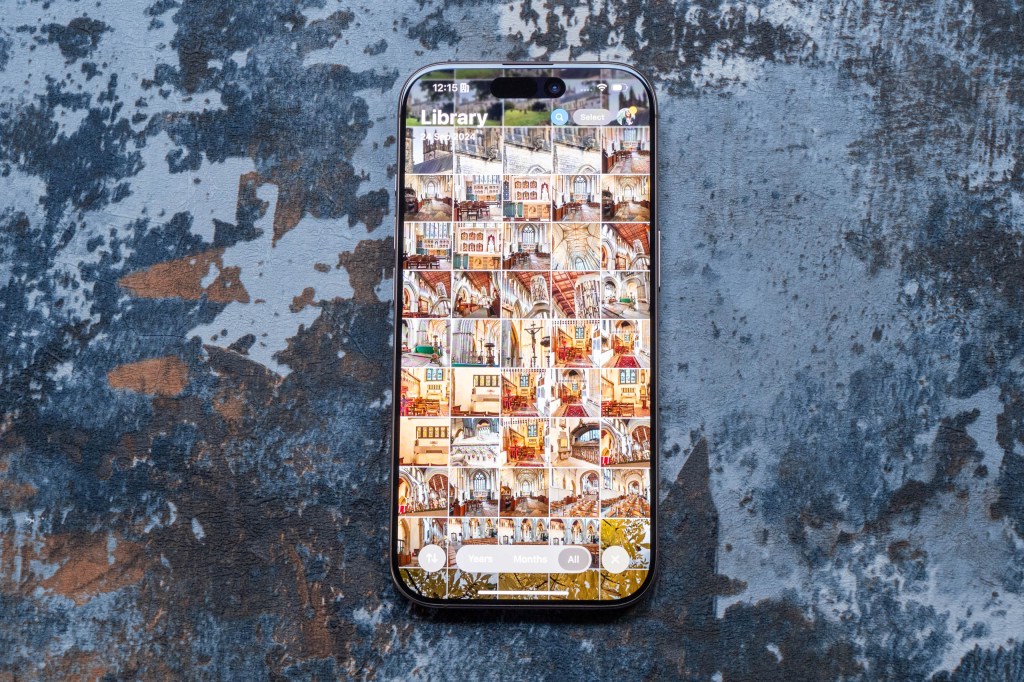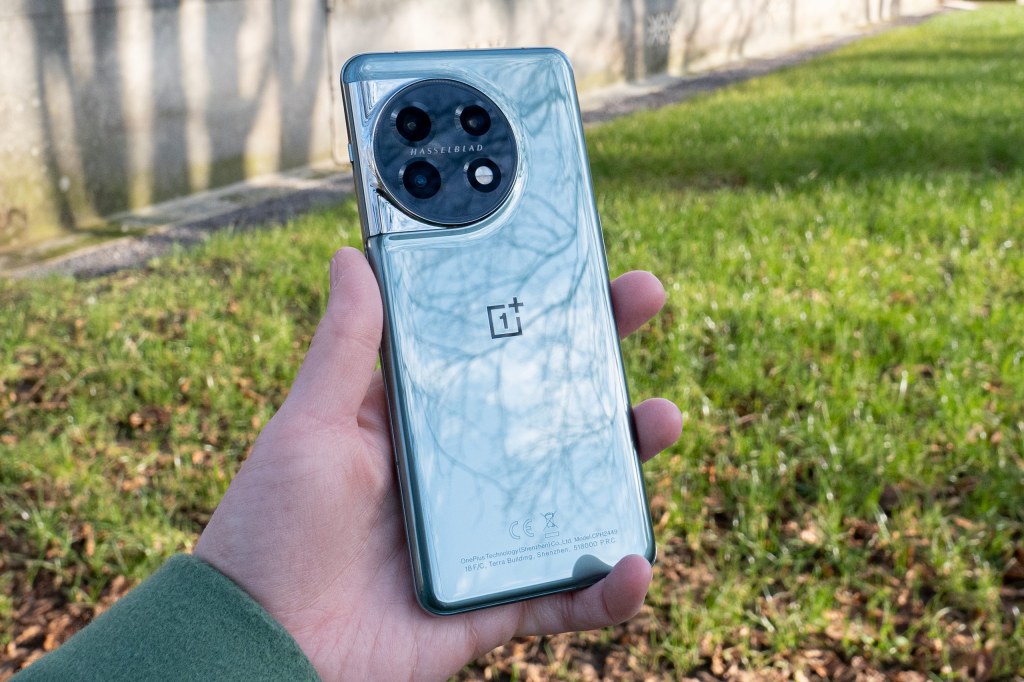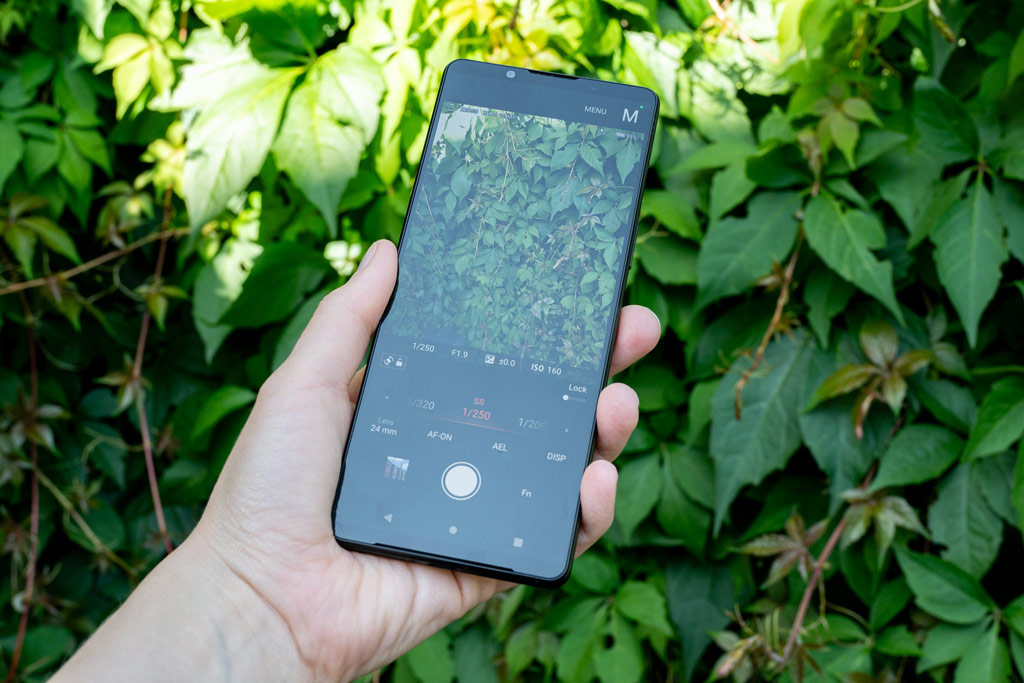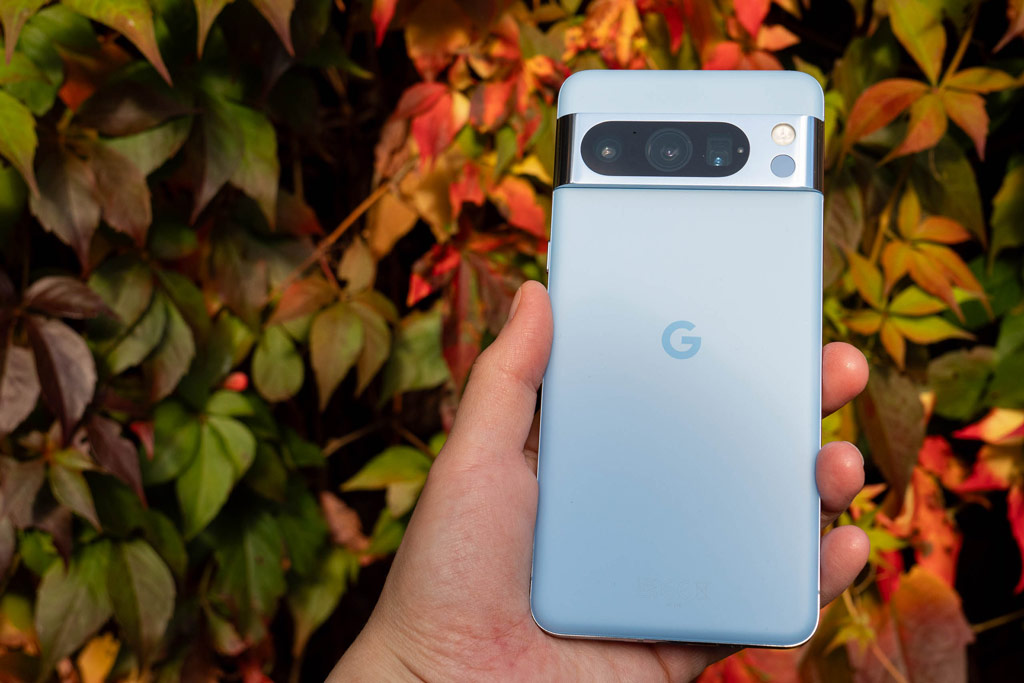A smartphone is the obvious tool for street photography: you already have it with you, ready for opportunist shots. Everyone has one, so they don’t draw attention – what’s more, the recent improvements in smartphone camera tech make capture of much sharper and more dynamic street shots possible with them.
With so many great options out there, choosing a smartphone is highly subjective. The iPhone is consistently one of the most popular, with the latest equipped with absolutely superb camera setups – as we found in our review of the iPhone 16 Pro and iPhone 16 Pro Max.
However, Samsung’s sublime Galaxy phones enjoy a similar-sized market share, and you shouldn’t count out budget-friendly competition from the likes of Oppo, OnePlus, Google and more.
So, based on the findings of our review team, we’ve put together this quick guide to the smartphones for street photography that we reckon offer real value for money. Street photography can be daunting, but starting with your smartphone is a great way to give it a go without being burdensome. Check out this buyer’s guide for the best camera phones for photography.
The best smartphone for street photography – our quick list
Want to get right to it? Here’s a quick list of the phones we’ve picked for street photography, along with links to get the best prices:
- Apple iPhone 16 Pro: Buy now
- Samsung Galaxy S24 Ultra: Buy now
- OnePlus 12: Buy now
- Sony Xperia 1 V: Buy now
- Google Pixel 8 Pro: Buy now
- OPPO Reno8 Pro 5G – Buy now
- Google Pixel 9 Pro: Buy now
Read on to learn more about each of these phones, including our review team’s verdict on each one…
Apple iPhone 16 Pro
Amateur Photographer verdict
The iPhone 16 Pro takes great photos and videos, with some improvements to usability and design over its predecessor: but not many.- 3x lens system
- New camera control button
- No compromise to camera for smaller device
- Low resolution telephoto camera
- Low resolution selfie camera
At a glance:
- 48MP wide camera, f/1.78 aperture, 24mm equivalent
- 48MP ultrawide camera, f/2.2 aperture, 13mm equivalent
- 12MP 5x telephoto, f/2.8 aperture, 120mm equivalent
- 6.3” Super Retina XDR OLED screen
- Titanium chassis
- iOS 18
- Processor: A18 Pro Chip
- From $999 / £949
The iPhone 16 Pro has a triple-lens camera setup, comprising a 1x, 0.5x ultrawide and a 5x telephoto lens. This is the same set up as that in the iPhone 16 Pro Max (unlike the iPhone 15 Pro, which had a shorter (3x) telephoto lens than the 15 Pro Max). It is marginally smaller than the 15 Pro, too.
Last year’s “Action Button” of the iPhone 15 Pro series replaced the old volume/mute switch, and could be set to do other things, such as launch the camera. The iPhone 16 Pro/Max retain this, but another new button means you may not need it. The new “Camera Control” is found on the bottom right hand side of the phone when holding it in portrait orientation, but turn the phone landscape and it’ll be positioned where a traditional shutter release button would be. This is useful for spontaneous shots that urban life can present opportunities for.
Another development is that the ultrawide sensor has been upgraded to 48MP from 12MP. The lens is 13mm f/2.2 equivalent. The main sensor is also 48MP, and with its 24mm f/1.78 lens appears to be the same as last year’s model. The 5x telephoto is 120mm f/2.8 equivalent, and seems the same as that on last year’s iPhone 15 Pro Max.
A new feature is the latest generation “Photographic Styles”: digital filters to give photos a different look and feel. These replace the digital filters of previous iPhones. Styles allow fine-tuning of colour, intensity and tone, and any settings you create can be saved. A wide number of presets are included, such as “Vibrant”, “Dramatic” and “Luminous”, which provide plenty of creative scope.
Read our iPhone 16 Pro review.
Samsung Galaxy S24 Ultra
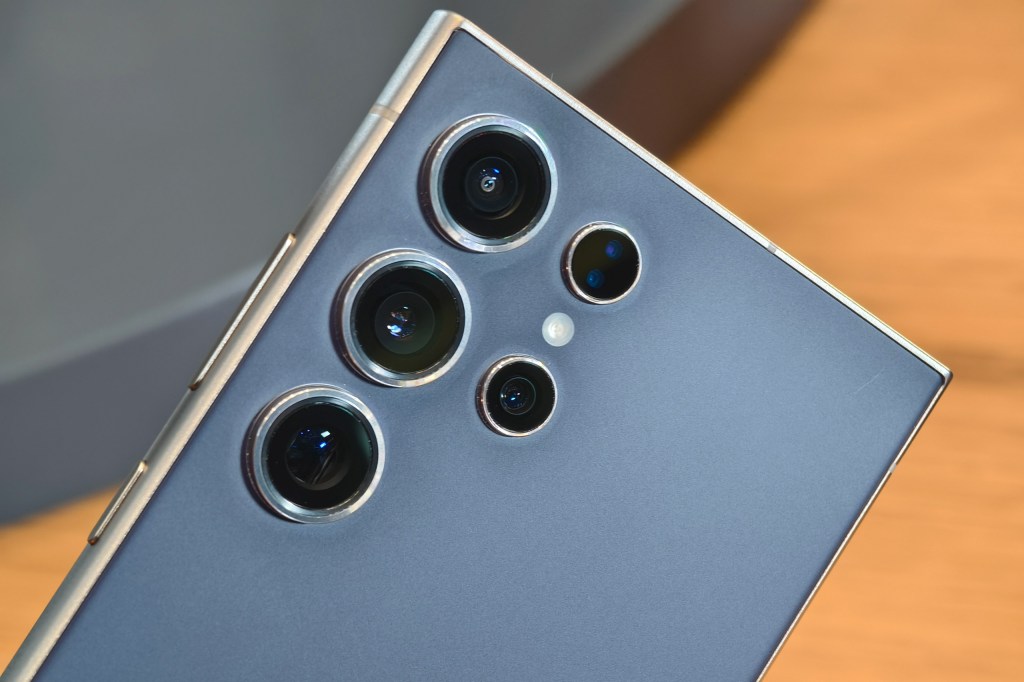
Amateur Photographer verdict
The S24 Ultra is an incredible all-round camera-phone, and amongst the best camera phones, and smartphones, out there, but it’s not perfect.- Improved image quality (slightly)
- Massively improved screen
- Added AI features
- Reflection removal particularly useful
- Macro mode lags behind others
- Shutter lag really hurts for fast moving subjects
- 45W charging is looking slow
At a glance:
- 4 x lenses, comprising ultra-wide, wide, two telephoto
- 5x telephoto camera has 10x Super AI / Multi-frame / Super Resolution
- Android
- Portrait, Night, High resolution mode, raw shooting available
- From $1,299 / £1,249 (256GB)
This phone’s big marketing selling point, just like its predecessor, is its 200MP main sensor. Do you need that? Probably not – but it gives you some flexible options when it comes to cropping and shooting with digital zoom.
Unlike any other smartphones listed here, it has four different lenses. And the comprehensive native camera app offers a host of shooting options. The new Ultra gained “AI ProVisual engine” which is said to improve night photography, noise performance, zoom quality, colour reproduction as well and HDR imaging. It has an extensive list of AI photography features, including Portrait effect, Background blur, Remaster photo and Reflection removal.
Night shooting performance is good, and you can also blend the Night and Portrait modes which might make for good low-light street photography. That said, the best results are generally from the main lens in good light, just as with most other smartphones.
The disadvantage of this phone is, of course, it’s high asking price. The S23 Ultra model, and even the S22, share much of its set-up, and a smaller, more manageable screen size.
Read our Samsung Galaxy S24 Ultra Review
OnePlus 12
Amateur Photographer verdict
A well-performing model with improvements in cameras, giving excellent image quality across various conditions.- Good value flagship
- Pro mode
- Hasselblad portrait modes
- Fairly short telephoto lens
- Raw shooting only in Pro mode, can’t shoot JPEGs simultaneously
- Selfie camera fixed focus only
OnePlus 12 at a glance:
- 3 cameras, comprising ultra-wide, wide and “portrait” short telephoto
- Android
- Portrait, Night, macro and raw format available
- From $600 / £649 (256GB)
The OnePlus 12 is the latest triple-lens array flagship from OnePlus with high-end specs. As it is not one of the “big three” you won’t be paying a premium price; but it isn’t cheap.
Equipped with a competent three-module camera setup that provides a solid basis for street photography, it’s something of a portrait specialist; one module being a fairly short telephoto equivalent 48mm lens, with dedicated portrait modes built in. As many street photographers favour a 50mm lens, this makes it an attractive option.
In use, we found the OnePlus 12 delivered consistently vibrant and high-quality images, with plenty of detail – though naturally the main wide camera module is the best. OnePlus’ partnership with Hasselblad in creating its camera systems continues in this model, and while the promises around this can sound like marketing jargon at times, the punchy colours continue to impress – even if noticeably inconsistent when swapping between lenses, a shortcoming already present in the OnePlus 11 that the company failed to remedy.
Read our full OnePlus 12 review.
Sony Xperia 1 V
Amateur Photographer verdict
Pro mode and 30 fps shooting will help you capture that decisive moment without a hitch. However the flagship price can be a deterring factor for some.- Good manual control
- RAW shooting
- Takes Micro SD card
- 30 fps
- No proper portrait mode
- No macro mode
- Pricey
At a glance:
- 3 x lenses, comprising ultra-wide, wide and optical zoom lens
- Android
- Night, Bokeh, semi-automatic and manual modes, raw shooting available
- From $900 / £790
While the best Sony mirrorless cameras continue to impress, the manufacturer has had markedly less success with its Xperia phones. The Xperia 1 V attempts to turn the tide and take a greater share in the global smartphone market with Apple and Samsung. Unfortunately, as we discovered in our full review, the Xperia 1 V lacks in some basics, given its price; but does have useful features for street photographers.
For a start, there’s the burst shooting modes, which can go up to a crisp 30fps to ensure you won’t miss even the most fleeting moment. Also, the telephoto module isn’t just long prime lens, but an optical zoom, delivering an equivalent focal range of 85-125mm with an f/2.3-f/2.8 aperture.The Camera Pro app offers full control of settings should you want it, and new to this model is a Night mode which kicks in automatically when light is low.
All this is great, though you still have to contend with plenty of classically strange Sony decisions in the phone’s design and operation. For instance, the main module uses a sensor with 48 effective megapixels, which makes use of pixel binning to create 12MP images. So far so standard, but why is there no option to shoot in full-resolution (or even just higher res) for those who want to? Sony has also stuck with that 21:9 screen design, making for a tall and thin phone that won’t be to everyone’s taste.
Read our Sony Xperia 1 V review.
Google Pixel 8 Pro
Amateur Photographer verdict
The Google Pixel 8 Pro produces excellent images in a range of conditions, including low light. A noticeable jump from its predecessors- 5x telephoto camera
- Macro mode
- Good value
- No manual mode
- HDR can’t be turned off unless you shoot RAW
At a glance:
- 3 x lenses, comprising ultra-wide, wide and telephoto
- Android
- Portrait, Night, Motion, raw shooting available.
- From $999 / from £899
The Pixel 8 Pro is a good option for those who like the simplicity of an iPhone, but prefer the Android interface. In our review we said, ‘Using a combination of excellent hardware and advanced software, the Pixel 8 Pro takes what the company has already done with its existing models and improved it even further to make it extremely impressive.’ A noticeable upgrade from older models, but only a few improvements on the Google Pixel 7 Pro.
Previously there was no Pro mode with Pixel phones, but they have the ability to shoot in raw format along with other shooting modes such as Portrait and Night – which both put in impressive performances thanks to computational photography. However, software improvements have seen the Pro mode added to the Google Pixel 8 Pro. We’ve also been particularly impressed by the level of detail, accurate exposure and colours captured. The quality of results created in low light, could make it the best choice for night street scenes in our group here.
The three lenses all put in a decent performance, with the best results from the wideangle main sensor. The zoom lens comes in handy if you want to keep your distance.
The Pixel 8 Pro will likely undergo further discounts now that it has been succeeded by the Pixel 9 Pro.
Oppo Reno8 Pro
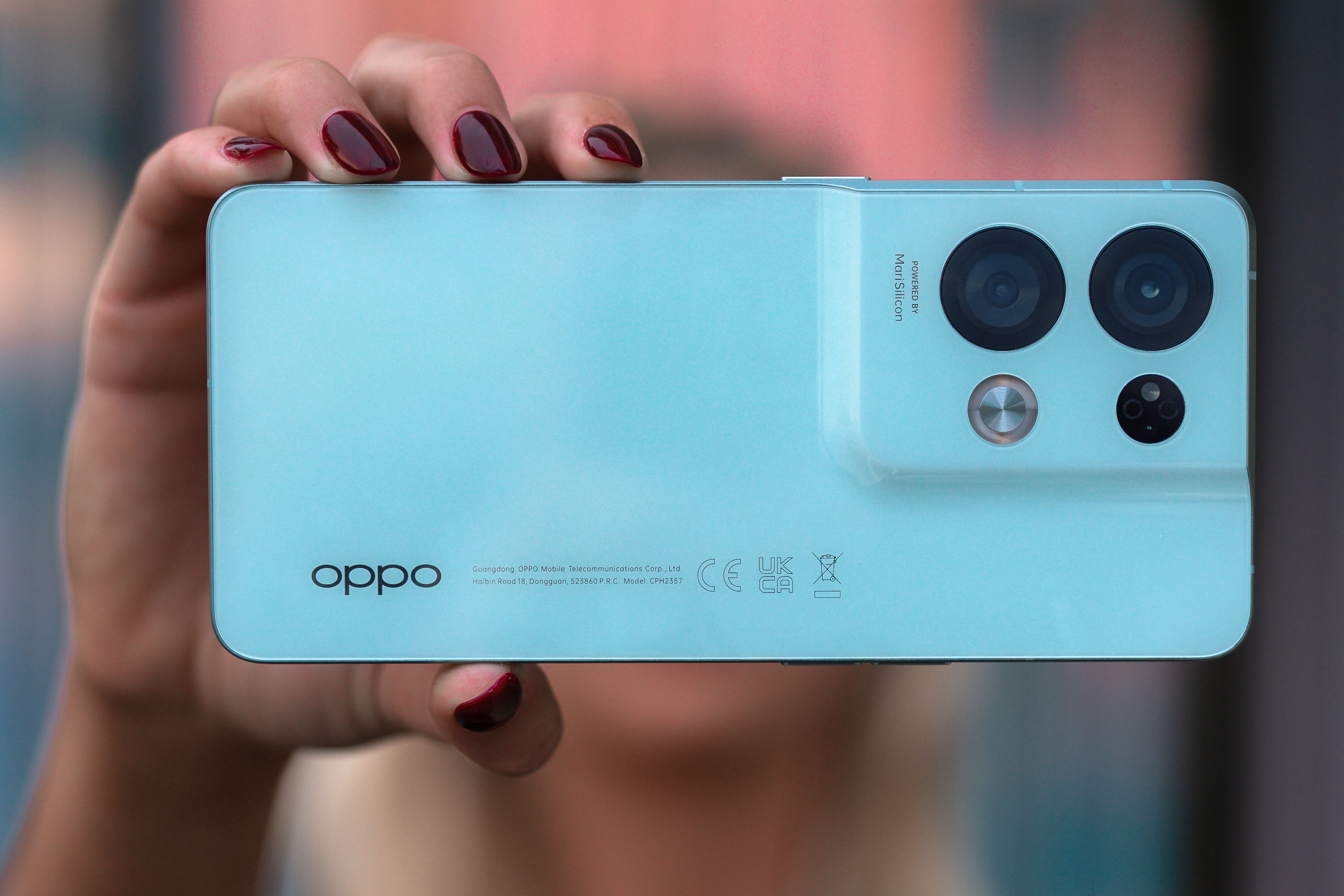
Amateur Photographer verdict
The Oppo Reno8 Pro proves that you don’t need a flagship smartphone to get a decent camera. Its main camera in particular delivers good results across a range of shooting conditions- Good all-rounder
- More affordable
- No telephoto lens
- No RAW shooting
At a glance:
- 2 x main lenses, comprising ultra-wide and wide
- Android
- Portrait, Night, Pro, raw shooting available
- From around $589 / £429
This mid-range option is good for those on a more restricted budget, but who still want a good range of options from their smartphone. Oppo is becoming ever more popular in the UK, with plenty of devices available to suit different budgets and needs. With the Reno8 Pro, you get two main lenses, one of which is a 23mm (equivalent) and is backed by a 50MP sensor.
Other useful features include its long battery life and a wide array of shooting modes, which includes a ‘pro’ mode for more advanced shooting. You can also shoot in monochrome directly in the camera app.
Read our OPPO Reno8 Pro full review.
Google Pixel 9 Pro
Amateur Photographer verdict
A small flagship phone with great build quality and camera features that does a fantastic job in most situations.- Great image quality
- Improved selfie camera
- Smaller screen is no compromise to camera
- AI features such as Add Me are great fun
- Expensive for additional storage options
- No true 8K video recording
- Average macro performance
At a glance:
- Price: from $999 / £800
- 50MP main camera, f/1.68, OIS (1/1.31inch)
- 48MP ultra-wide, f/1.7, with macro AF (1/2.55inch)
- 48MP telephoto, f/2.8, 5x zoom, OIS (1/2.55inch)
- 42MP f/2.2 selfie camera with AF
- 4K 60fps video recording
- 8K video via cloud-based “Video Boost” (upscaling)
- 6.3-inch, 1-120Hz, 2000 nits peak brightness, Gorilla Glass Victus 2
- 4700mAh battery, 45W fast charging, wireless charging
- Google Tensor G4 processor, 16GB RAM
To clarify, the standard Pixel 9 Pro has a 6.3-inch screen, while the 9 Pro XL has a 6.8-inch screen. Practically, we consider the smaller version better adapted for street photography. Most of the new features come via software upgrades. That includes an updated HDR+ feature for better colours and skin tones, improved exposure, sharpness, detail, contrast and more. Google also claims there have been improvements to low-light shooting, with some new functionality including Night-sight panoramic photos.
It retains a triple-lens camera setup, featuring a 1x, 0.5x ultrawide and a 5x telephoto lens. The ultrawide has a 48MP 1/2.55” sensor, with a slightly improved f/1.7 aperture (it was f/2.0 for the Pixel 8 Pro) and a 12mm equivalent focal length. The telephoto also has a 48MP 1/2.55” sensor, with an f/2.8 aperture, the zoom is a 5x zoom, with the equivalent focal length displaying as 110mm (which is just shy of 5x). It should be noted that despite all of these high-resolution sensors, the standard output is 12MP from each, due to pixel binning.
Read our full review of the Google Pixel 9 Pro
Text by Amy Davies, with contributions from Jon Stapley.
If you’re set on using a proper camera, check out our guide to the best cameras for street photography. Find out how to use your smartphone for street photography.
Be sure to stay up to date with the latest rules and guidance on how to be street smart as a photographer.
Related reading:
- iPhone vs Android: Which is better for photography?
- Black and white street photography guide
- 10 commandments of street photography

